For the living Maya, epigraphy is so much more than epigraphy. A workshop held at ADICI-Wakliiqo headquarters in Coban, Alta Verapaz, is a perfect example.
 ADICI-Wakliiqo is a social service non-governmental organization focusing on sustainable agricultural development, fair trade, and environmental conservation within the context of community self-determination in the Q’eqchi’-speaking regions of Guatemala. So why epigraphy?
ADICI-Wakliiqo is a social service non-governmental organization focusing on sustainable agricultural development, fair trade, and environmental conservation within the context of community self-determination in the Q’eqchi’-speaking regions of Guatemala. So why epigraphy?
Para los mayas actuales, la epigrafía es mucho más que sólo epigrafía. Un perfecto ejemplo de esto podemos verlo en un taller que tuvo lugar en las oficinas de ADICI-Wakliiqo, en Cobán, Alta Verapaz, Guatemala.
ADICI-Wakliiqo es una organización no gubernamental de servicio social, dedicada al desarrollo agrícola sostenible, al comercio justo y a la conservación del medio dentro del contexto de la autodeterminación comunitaria en las regiones hablantes de q’eqchi’ en Guatemala. Habiendo dicho lo anterior, ¿qué tiene que ver esto con la epigrafía?
Our MAM colleague Sebastian Si, Maya Q’eqchi’ from San Juan Chamelco, Alta Verapaz, explains:
“[Epigraphy] allows us to know our history, reconstruct our present, and see our future.”
Sebastian works full time at ADICI-Wakliiqo and he invited me to give a one-day workshop on Maya glyphs and the calendar last year.
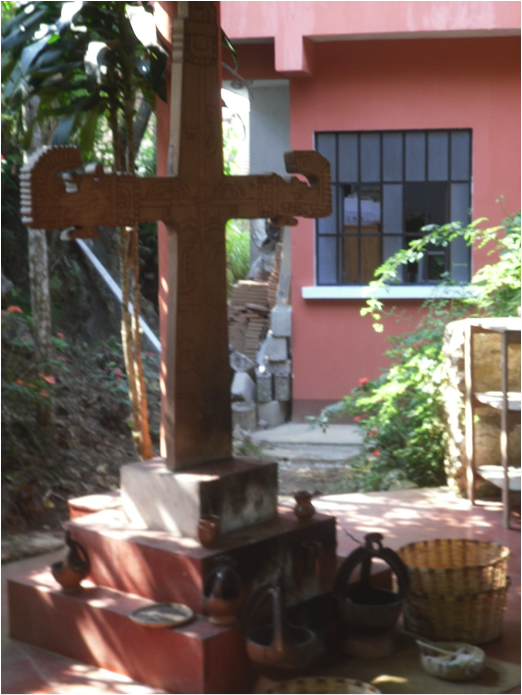
Inside the ADICI-Waliiqo headquarters, a hand-carved wooden replica from the famous cross group at Palenque, Chiapas, forms the center piece of the ceremonial altar.
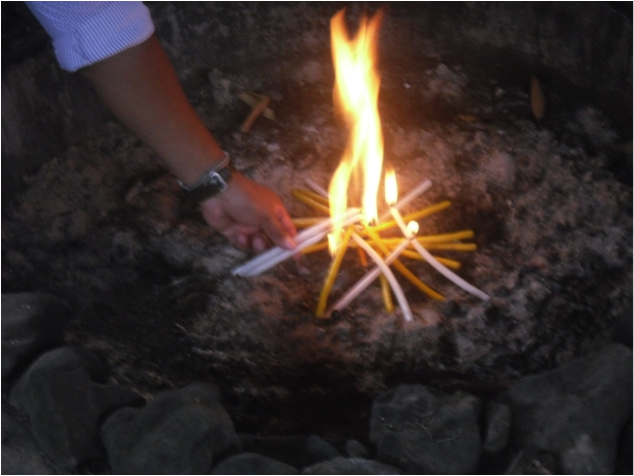
Each take their turn reflecting on the significance of the occasion before placing their individual candles in the community fire in the central hearth.
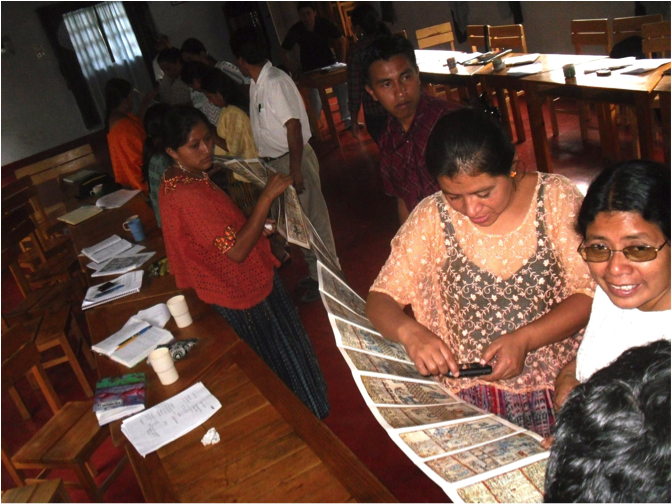
Hands-on (literally) training on how to read the codices always brings forth comparisons of the ancient pictures with contemporary practices in the communities.
The Maya codices from Yucatan, Mexico, find relevance and meaning for today’s Maya of Alta Verapaz, Guatemala.
As we move into our own future at MAM, supporting the spread of this knowledge and these workshops in the Mayan-speaking communities, as more and more workshops are taught by the Maya themselves, we see that indeed, for the Maya, epigraphy is so much more than epigraphy.
 Nuestros colegas de MAM, Sebastián Si, q’eqchi’ de San Juan Chamelco, en Alta Verapaz, explica:
Nuestros colegas de MAM, Sebastián Si, q’eqchi’ de San Juan Chamelco, en Alta Verapaz, explica:
“[La epigrafía] nos permite conocer nuestra historia, reconstruir nuestro presente y ver nuestro futuro”
Sebastián trabaja de tiempo completo en ADICI-Wakliiqo y me invitó el año pasado a impartir un taller de un día de duración sobre los glifos y el calendario mayas.

Sebastián Si Pop, en primer plano, y sus colegas dan inicio al evento alrededor del altar ceremonial.

Dentro de las oficinas de ADICI-Waliiqo, una réplica tallada a mano en madera de la famosa "cruz" del grupo de las cruces en Palenque, Chiapas, México, constituye la pieza central del altar ceremonial.

Cada uno tiene un turno para reflexionar sobre la importancia de la ocasión antes de colocar su vela personal en el fuego comunal del fogón central.

La capacitación en propia mano (literalmente) sobre cómo leer los códices siempre hace surgir comparaciones entre las imágenes antiguas y las prácticas contemporáneas de las comunidades.
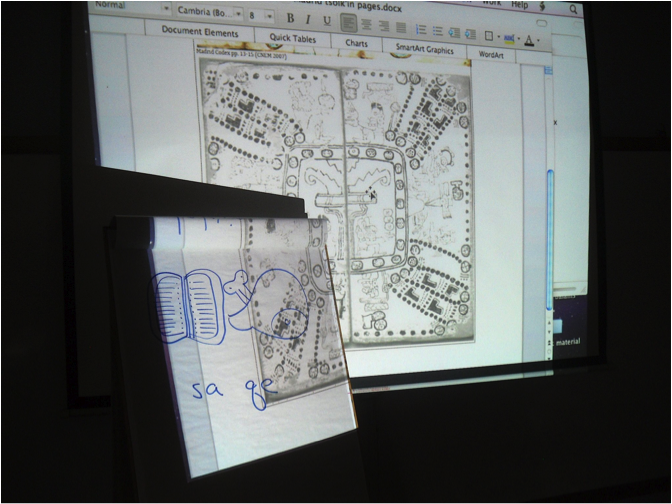
Las direcciones cardinales del Códice de Madrid, escritas en maya yucateco, se traducen al q'eqchi'. . .
Los códices mayas de Yucatán, México, encuentran una relevancia y un significado renovados entre los mayas actuales de Alta Verapaz, en Guatemala.
Al avanzar hacia nuestro propio futuro en MAM, apoyando la difusión de este conocimiento y de estos talleres entre las comunidades hablantes de lenguas mayas y conforme son cada vez más los talleres impartidos por maestros mayas, podemos constatar que, de hecho, para los mayas la epigrafía es muchísimo más que sólo epigrafía.



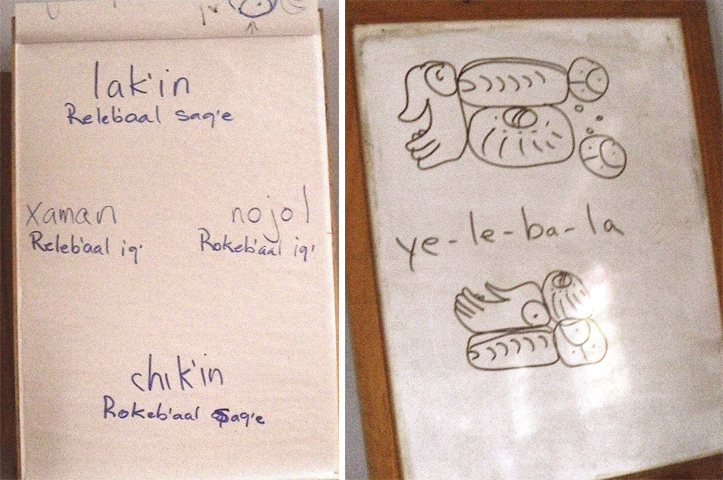
This is a beautiful illustration of why the study of Maya glyphs is so much more than an esoteric exercise. Sebastian sums it up perfectly. Thanks to Bruce for the fabulous photos.